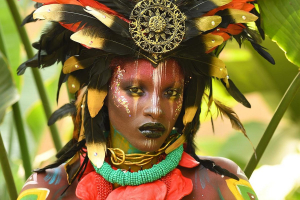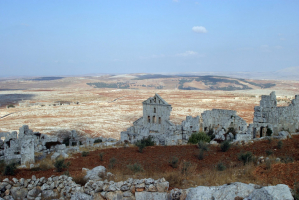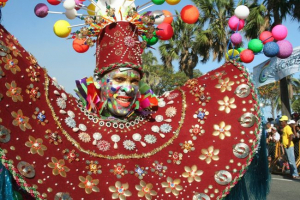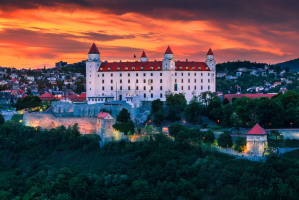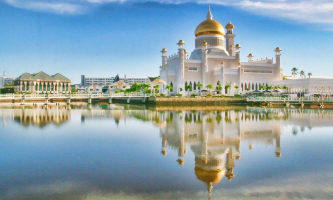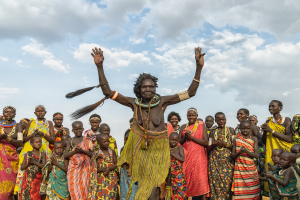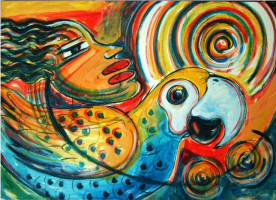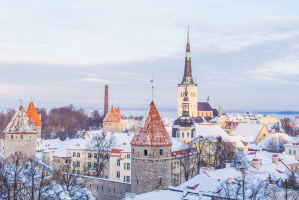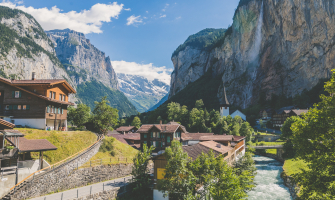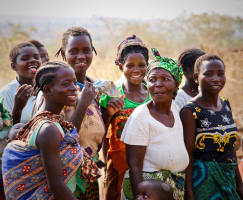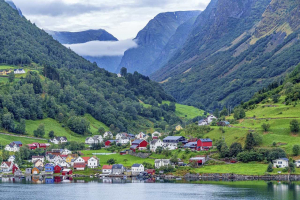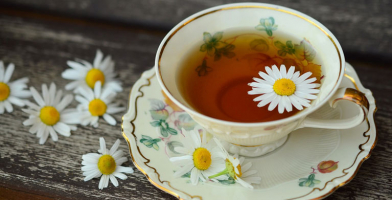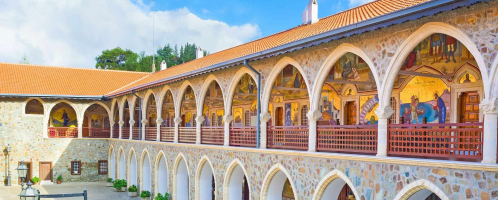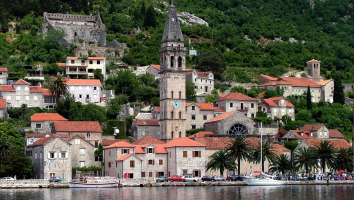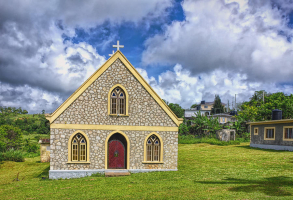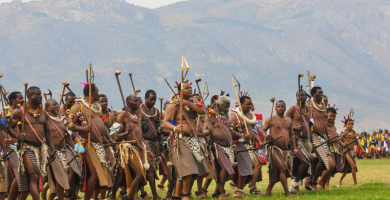Top 10 Kazakhstan Culture, Customs and Etiquette
Kazakhs are rich in traditions. From birth to old age and death, every step of their life is marked in history. Unfortunately, many of Kazakhstan's rich and ... read more...interesting customs and traditions have been forgotten during the past century. This article would like to summarize the list of Kazakhstan culture, customs and etiquette for your reference.
-
Traditions and customs associated with the reception of guests Travelers to Kazakhstan are likely to encounter traditions associated with guest reception. Konakasy is a custom associated with how a guest is treated. As previously stated, the Kazakh people have long been known for their hospitality. Kazakhs always save the best food for their guests. Guests are classified into three types: "arnayy konak," a specially invited guest, "kudayy konak," an uninvited stranger, and "kydyrma konak," an unexpected guest. All of these guests, regardless of their type, are served a lavish meal - Konakasy.
Konakkade - a tradition in which a host has the right to request that a guest sing a song or play a musical instrument (as long as the guest is known for his or her talent), ensuring that there is some fun and joy during the feast. Erulik - When new settlers arrived in a village, an erulik was arranged in their honor, which was a small celebration that allowed newcomers to quickly adapt to their new surroundings. In addition, the custom erulik includes assistance in settling newcomers when neighbors provide them with firewood, drinking water, and other necessities for the time being.
Toy dastarkhan - a special type of celebration held before or during a holiday. In addition to the gatherings during Toy Dastarkhan, sports competitions, music, singing competitions (aitys), and horse riding competitions are organized. During such occasions, dishes of Kazakh national cuisine are frequently served.
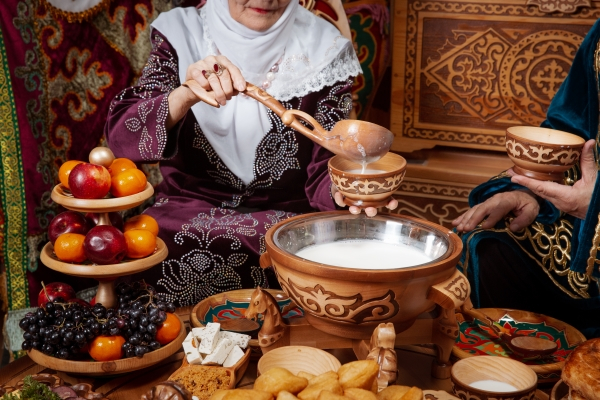
vk.com 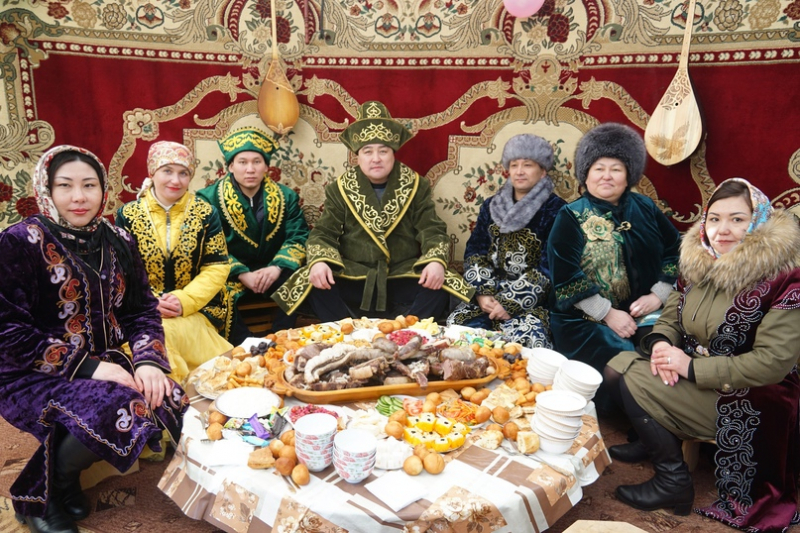
vk.com -
Guests are very often have to receive or give presents; in addition, there are often times, when gifts should be given in some special occasions according to the traditions. Suyіnshі - a custom according to which a traveller or any other person who brought home a good message (news) receives a valuable gift from the owners in gratitude. Sometimes before telling good news a person says ‘Suyunshi’ or ‘what would you give me for a Suyinshi?’, thus implying that he or she has something great to tell.
“At mingizip shapan zhabu" is a high honour. According to the tradition, a respected visitor, who may be a poet (akin), a hero, warrior (batir) or other very respected man receives a gift from local residents: a horse and a splendid shapan (robe of camel's hair with a cotton lining) in recognition of their merit. Baygazy - a tradition of giving a gift to a person, who acquired a new valuable thing.

dienmayxanh.com -
Helping one another has always been highly valued by Kazakhs and is essential in a Kazakh community. As a result, there are a number of traditions associated with mutual aid. Asar - a family that needs to do urgent and sometimes difficult work has the right to seek help from relatives, friends, and neighbors. A lavish feast is laid out at the end of the work as a thank you to those who assisted.
Zhylu - a tradition associated with providing material, moral, and financial assistance to victims of natural disasters (fire, flood, etc.). All supporters, not just relatives, have the right to assist the victims. Donations can include livestock, building materials, clothing, money, and other items. Belkoterer - an elderly care tradition. For the elderly, delicious and most importantly - soft foods such as kazy, zhent, and cottage cheese are prepared. Typically, this responsibility falls to children or close relatives, rather than neighbors. The Belkoterer tradition exemplifies elderly care.
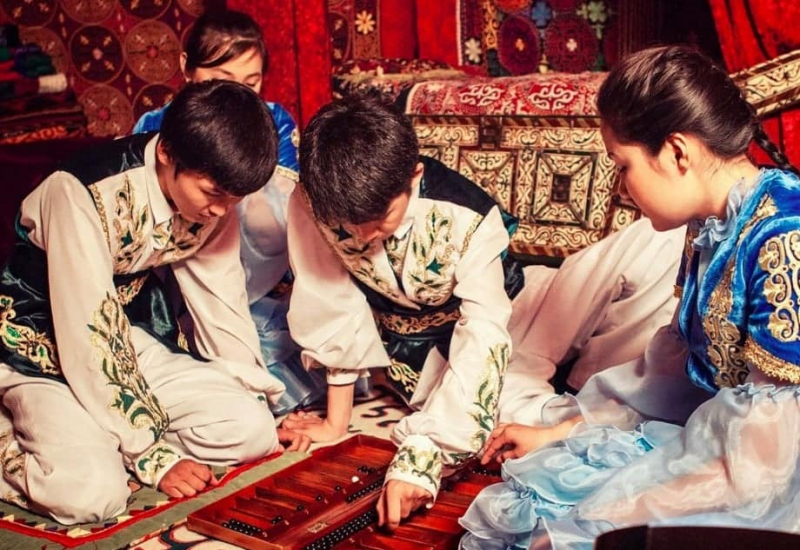
nineoclock.ro 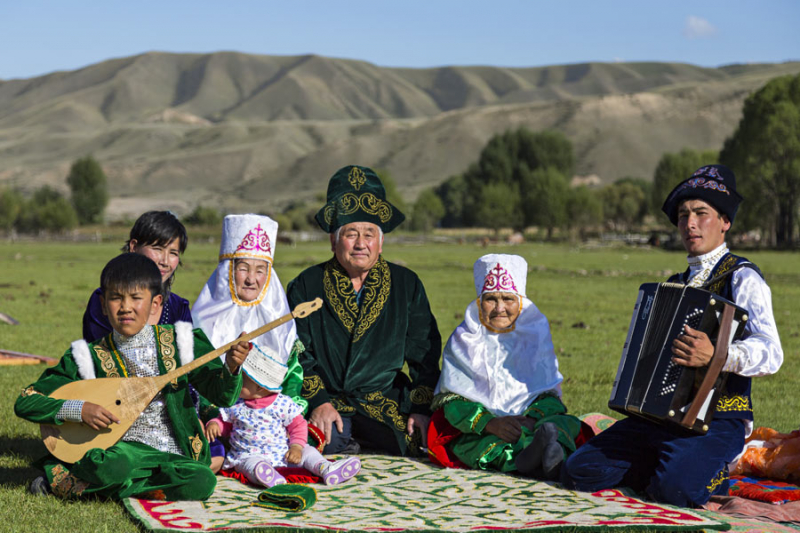
adyrna.kz -
Traditions associated with the birth and upbringing of children appear to be very important in many cultures. A brief description of the rituals and traditions observed by Kazakh families is provided below. Celebrations usually follow all of these rituals. Shіldehana - a celebration that is associated with childbirth.
Besіkke salu, besik toy - a holiday, hosted when the newborn is put to a cradle - besik. As a rule, it is organized on the 3rd-5th day after dropout of umbilical cord of the kid. Kyrkynan shygaru – a ritual performed on the fortieth day after birth that includes bathing baby in 40 tablespoons of water, and the first haircut and nail cut and other rituals.
Tusau kesu - a day when the baby took his first steps the oldest and most respected people is invited to perform a ceremony of Tusau keser. Then he or she should cut the special ropes, beset baby's legs, in order to ensure that in future the kid could walk nicely and run fast. Sundetke otyrgyzu is a rite of circumcision. The ceremony is held when a boy is 5-7 years old. A big festival to which all the relatives and friends are invited is organized after this. On the occasion of Sundetke otyrgyzu guests usually make generous gifts to the hero of the occasion and his parents.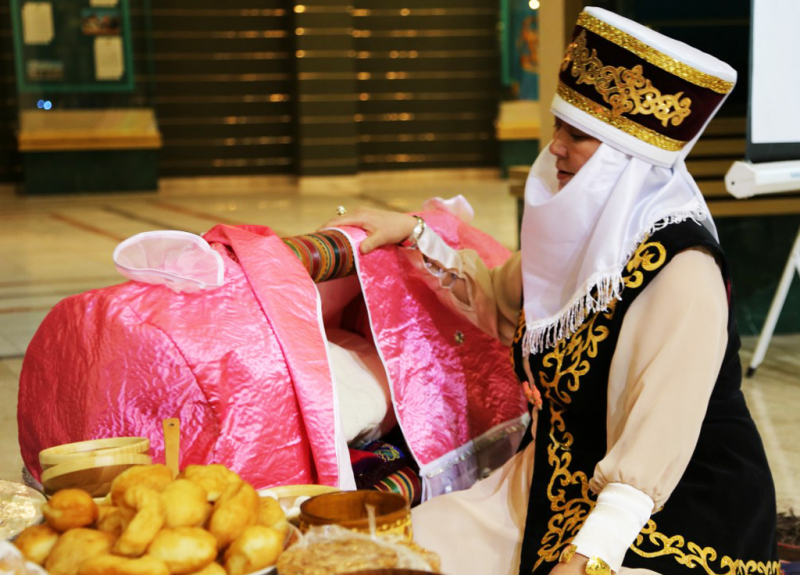
el.kz 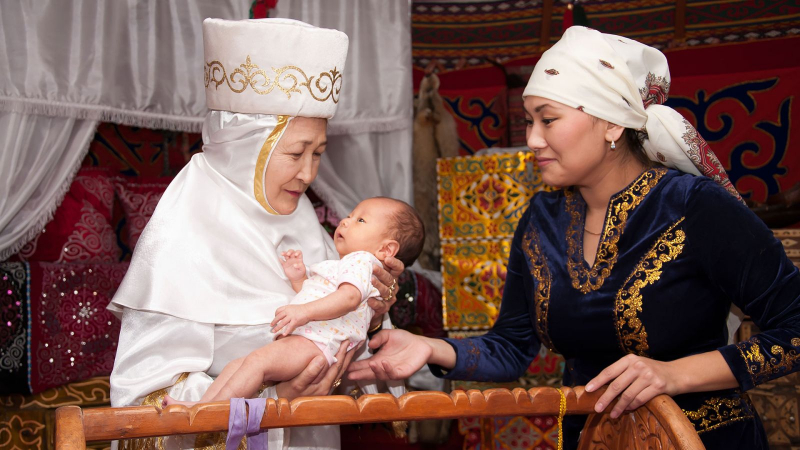
el.kz -
One of the most distinctive Kazakh marriage traditions is the prohibition on marriage between relatives up to the seventh generation. Such a taboo helps to prevent blood mixing and, as a result, benefits future offspring's health. The following is the traditional sequence of marriage ceremonies and rituals. Kudalyk attends every wedding ceremony in Kazakh society (matchmaking). Matchmakers visit the bride's home before the wedding. Their mission is to reach an agreement on a girl's marriage with her closest relatives. During the courtship, the father of the bride receives gifts from the guests as a deposit.
If the negotiations are successful, the father will present the main matchmaker with a coat. This custom is known as "Shege Sapa." The preparation of "kuyruk bauyr," a delectable dish made from liver and broad tail fat, also attests to the successful conclusion of courtship. The bride's sendoff, Kyz uzatu, is the next stage of the ceremony. Before the Kyz uzatu matchmakers return to the bride's house in the evening. The number of visitors should be kept to a minimum (5-7). The bride is taken to the groom's house early in the morning by matchmakers. Kelin tusru is the solemn ceremony of meeting the bride at the groom's home. The main component of keln tsru is a traditional performance of Betashar, a song of instructions and wishes.
When the Kazakhs lived a nomadic lifestyle, the newlyweds' dwelling (yurt) was located behind the house of the groom's parents. The bride was supposed to cross the first threshold of the yurt with the right foot, according to tradition. During the wedding ceremony, the couple must also drink a bowl of water with dissolved sugar and salt together. This ritual is thought to be a guarantee of a happy family life.
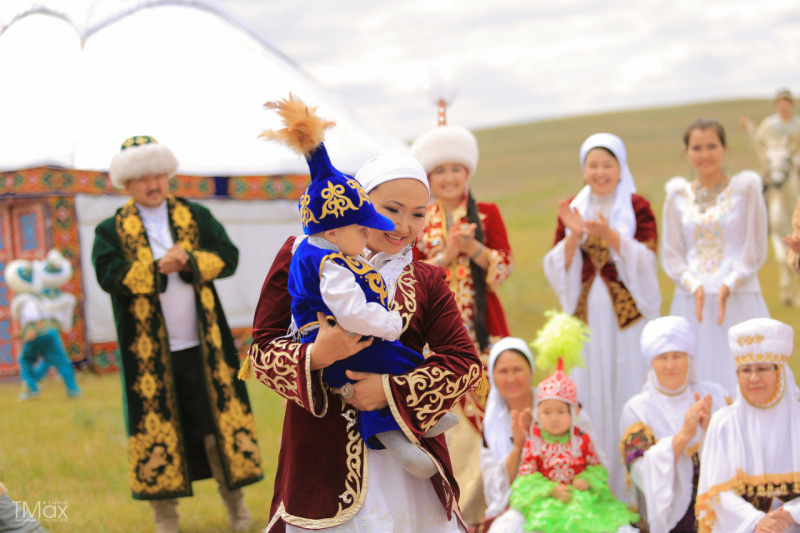
weproject.media 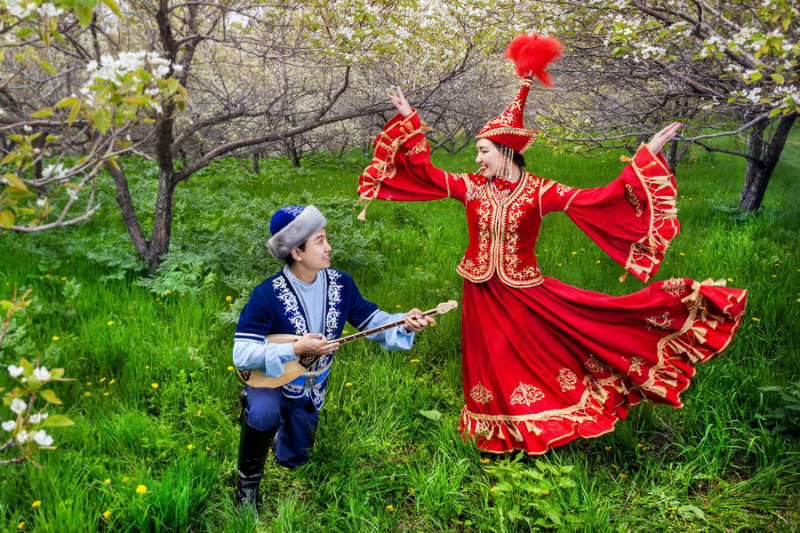
weproject.media -
Equestrian skills are essential to the nomadic lifestyle that underpins Kazakh culture. Kazakhs developed horse games over thousands of years of societal development to not only compete and have fun, but also to improve strength, agility, and dexterity while riding. Some of the games are based on ancient survival techniques, while others are simply for fun during the holidays—each game contributes to the development of spiritual unity and camaraderie among the Kazakh people. Despite a more sedentary lifestyle, Kazakhs have worked to preserve these games, and no major celebration would be complete without them today.
Riders can demonstrate their abilities in the various kazakh horse games that have become popular on the Kazakh steppe. Kokpar is the most popular horse game in Kazakhstan, along with its Central Asian counterparts Kok-Bar (Kyrgyzstan), Kupkari (Uzbekistan), and Buzkashi (Tajikistan). Ulak, the team version of Kokpar, is a battle for the carcass of a ram, which must be scooped up at a gallop and dragged to a specific location without giving it away to rivals. Alaman Baiga, a long-distance horse racing game that only allows local breeds of horses, can cover distances of 10, 20, 50, or even 100 kilometers. Another Kazakh favorite is "Kyz Kuu," in which a man must catch up with and kiss a girl.
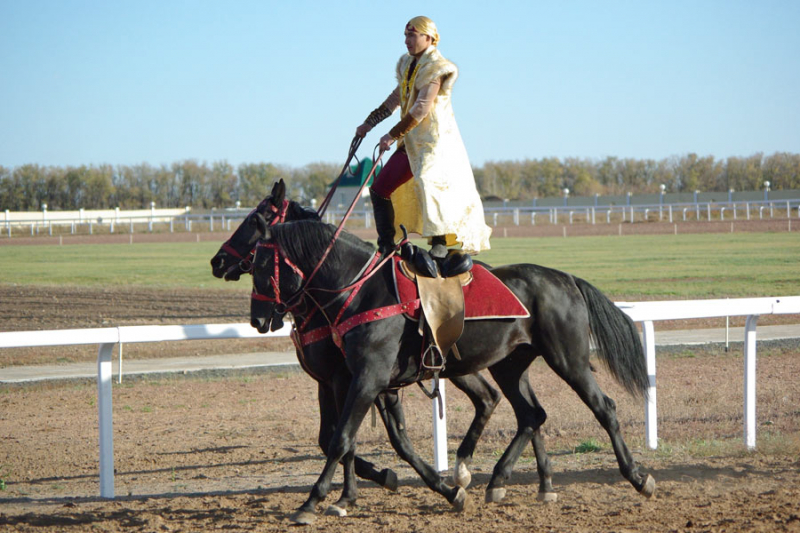
advantour.com 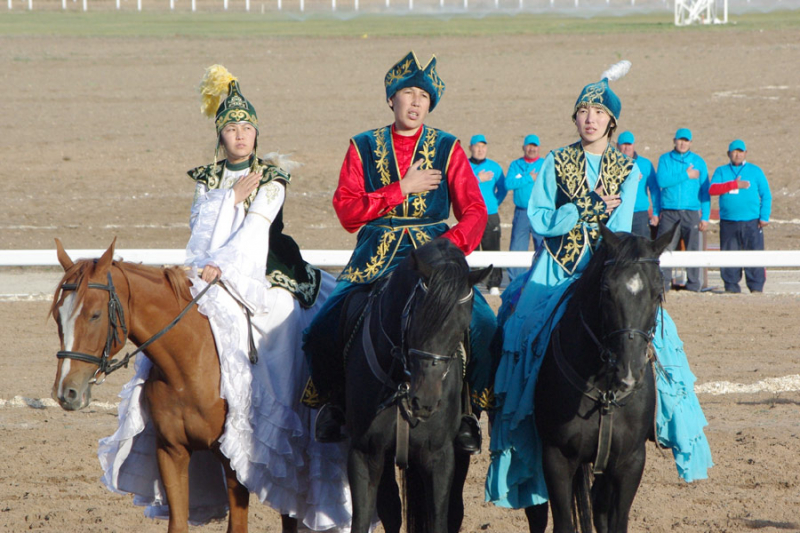
theguardian.com -
The nomadic way of life that became the foundation of Kazakhstan culture left an imprint on folk crafts. People created everything they needed for a long stay on the road while traveling from place to place. Kazakh crafts highlight essentials for survival and creating coziness on the road, emphasizing the people's transient nature: woodworking, felt for upholstering yurts, and the creation of horse riding equipment. The Kazakhs developed handicrafts for making warm fur coats and hats made of leather and animal fur in the harsh climate of the steppe, where the summer is extremely hot and the winter winds are unbearably cold. There was also a lot of blacksmithing and jewelry making.
Kazakhstan has successfully integrated into the global community in the twenty-first century, but it has also worked tirelessly to protect folk traditions and customs. The ancient ancestors' knowledge and ways of life, which conquered and roamed the Kazakh steppe, are still passed down from generation to generation. Visitors can learn more about Kazakh culture by visiting one of the country's many museums or during festivals and holidays.
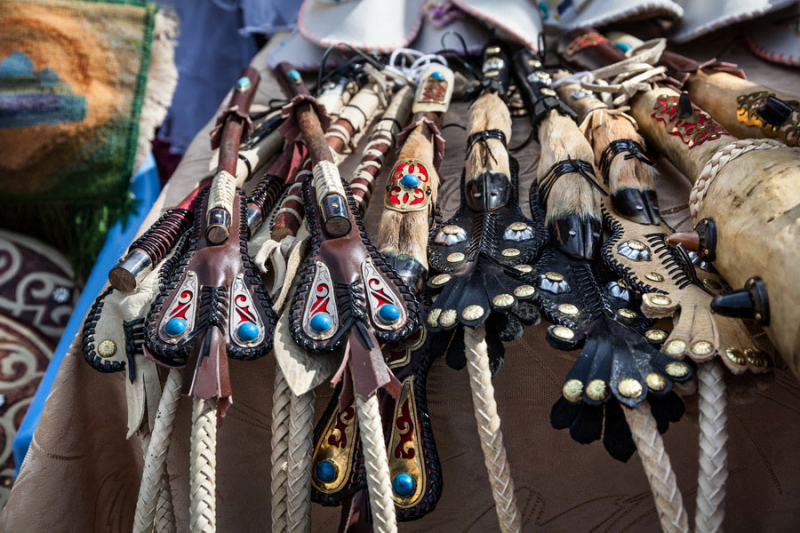
.advantour.com 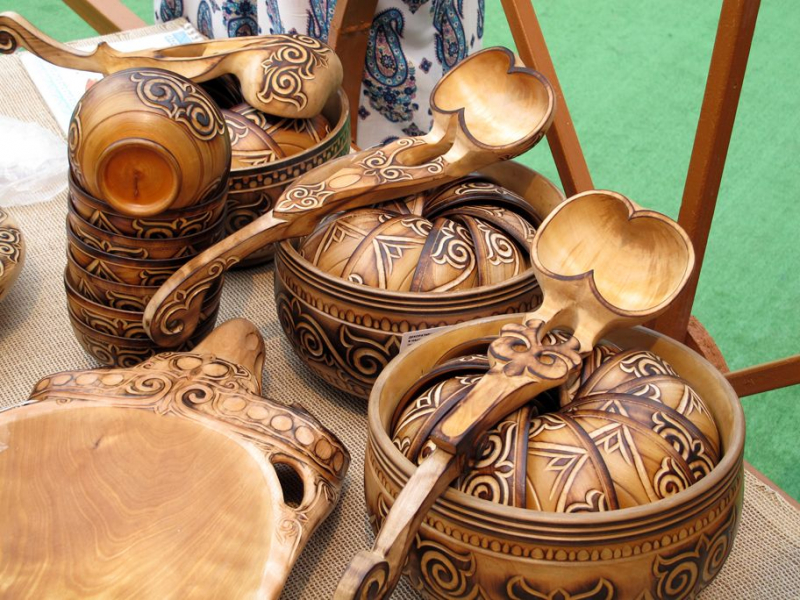
pinterest.com -
Religion in Kazakhstan is undergoing transformation. In the ninth century, Arabs introduced Islam to the region, and more than a thousand years later, Russian settlers from the north introduced Russian Orthodoxy. For the most part, no religion was practiced in the region during the seventy years of Soviet influence; religious participation was prohibited, and many churches and mosques were destroyed—religious traditions were lost in the name of Soviet atheism. At the turn of the century, 47 percent of the population identified as Muslim (primarily Sunni) and 44 percent as Russian Orthodox.
However, few people practice religion in any formal way, but Kazakhs have incorporated religion into some aspects of their daily lives; for example, when they pass graveyards where someone they know is buried, they cover their faces in a short prayer, and they frequently say prayers after meals. In everyday speech, phrases like "God willing" and "this is from God" are common. In Kazakhstan, there are almost no visible tensions between Muslims and Christians. Religion has been such a nonfactor for so long, and continues to occupy so little of daily life, that it is simply not an issue between Russians and Kazakhs.
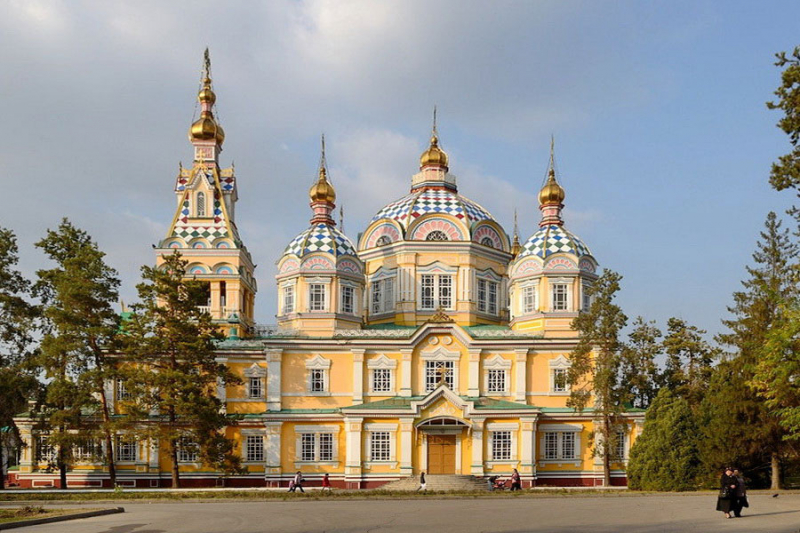
advantour.com 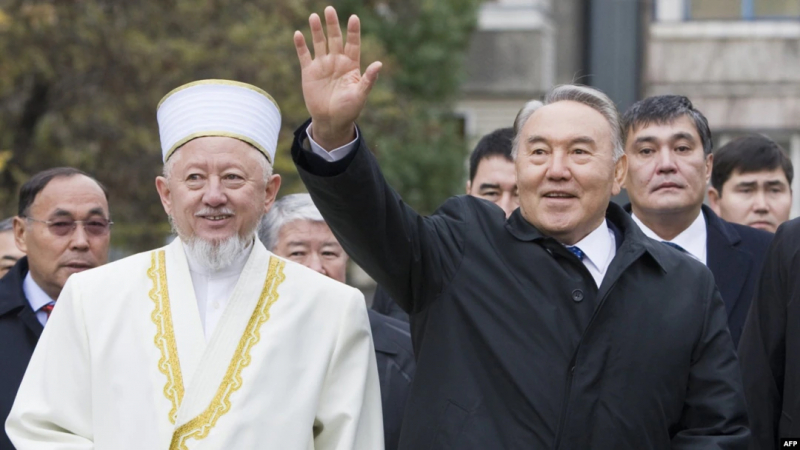
advantour.com -
Women's Day, which is very important in Kazakhstan and is celebrated by all, is one of the main secular celebrations. On this day, women are honored by their male coworkers and family members, who shower them with flowers and entertain them with skits and jokes. Narooz, or Kazakh New Year, is a holiday observed primarily by Kazakhs on March 22nd, but also by Kyrgyz, Uzbeks, Turkmen, and Iranians. It takes place on the summer solstice. Kazakhs prepare traditional foods, hold horse races, and build numerous yurts.
Victory Day, celebrated on May 9th, commemorates the Soviet victory over Nazi Germany. Independence was declared on October 25, the Day of the Republic. This is a nationalist day in Kazakhstan, with many speeches, songs, and performances in Kazakh. Independence Day is observed on December 16th to commemorate the riots in Almaty on December 16, 1986. The riots were the first public manifestation of Kazakh nationalism and solidarity. Independence Day, like Republic Day, is widely observed.
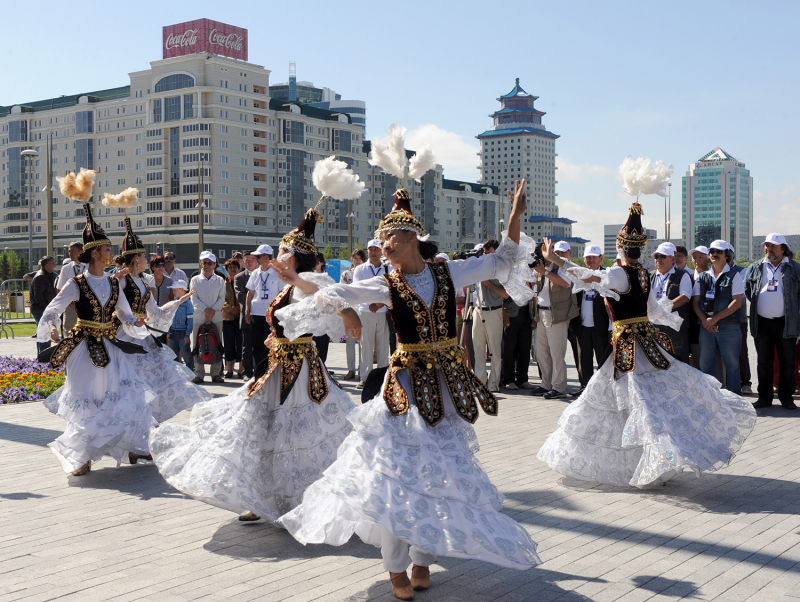
astanatimes.com 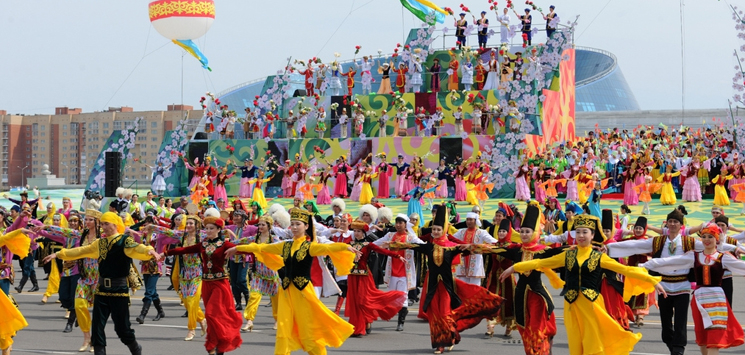
astanatimes.com -
Kazakh literary history has been unfolding for several thousand years. Historically, the territory of modern Kazakhstan—from the Caspian Sea coast to the snow-white Altai mountains—was inhabited by dozens of tribes who created legends and myths, epics, and fantastic stories. This period's works are popular because they formed a long-standing and widely accepted literary tradition. Individual authors with their own bibliographies did not become popular until the mid-nineteenth century.
Kazakhs appreciate storytelling and poetry. For millennia, a love of poetry has been a part of Kazakh culture-legends have been told and retold. The most well-known epics are "Korkyt-ata" and "Oguznam." Kazakh poets in the Middle Ages typically performed their works while accompanied by dombra or kobyz (plucked musical instruments), and they organized reading competitions known as "aytyz," which are similar to modern rap battles. Kazakhstan's written literary tradition dates only from the nineteenth century. Among the writers of the time, Abai Kunanbayev, whose name is on settlements, streets, theaters, schools, and universities in Kazakhstan today, stands out.
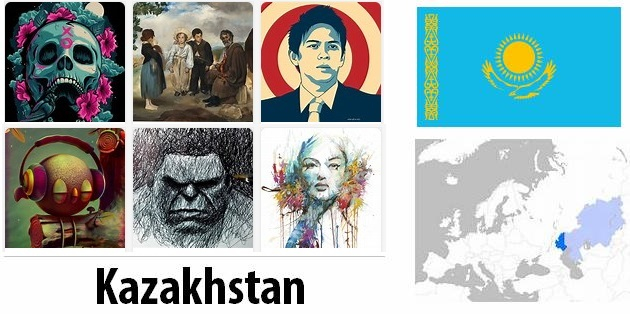
itypeauto.com 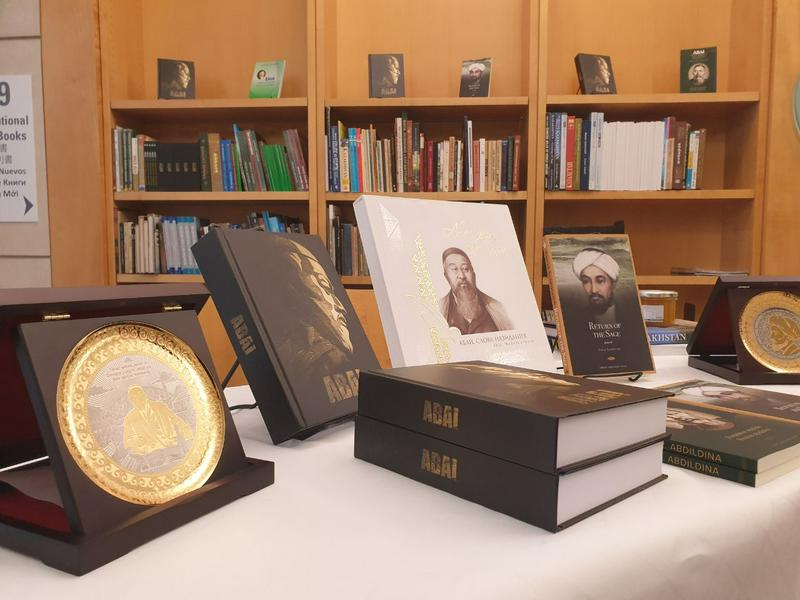
itypeauto.com












